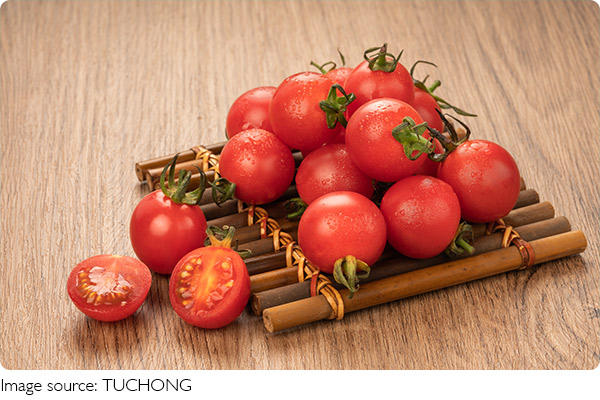It’s A Vegetable And A Fruit

Cherry tomatoes and tomatoes are common ingredients on the table. They have many similarities in color, shape, taste, uses, etc., so they often cause confusion among people.
However, from a botanical perspective, there are clear differences between cherry tomatoes and tomatoes. This article will take an in-depth look at these two ingredients, answer whether cherry tomatoes are vegetables or fruits, and provide a detailed analysis of their differences.
Part One: Is cherry tomato a vegetable or a fruit?
Cherry tomatoes are often thought of as a fruit, but in fact, this question involves the difference between their botanical and kitchen uses. Botanists consider cherry tomatoes a fruit.
Because they are the fruit of a plant, contain seeds, and develop from the flower of the plant. In the life cycle of plants, fruits are the organs used to spread seeds, which is also in line with the basic definition of fruits.
The creation of the teddy bear is associated with the former President of the United States.
People around the world celebrate Earth Day, a day that aims to raise awareness and action for the planet’s environmental protection.
Indoor greening enhances air quality, life quality, and natural connections, but choosing the right houseplants is key.
The key to successful vegetable farming.
Painters must always take care to protect their own health and safety.
Parents can foster a love for the earth in their children.
In the kitchen, however, people often think of cherry tomatoes as vegetables because their flavor and uses are more similar to vegetables. Cherry tomatoes are typically used in salads, sauces, pasta, and other dishes rather than as the main ingredient in desserts or fruit salads. Therefore, this confusion stems from the difference between botany and cooking.
The confusion also dates back to a legal proceeding in the late 19th century, when the U.S. Supreme Court ruled that tomatoes were vegetables in Nix v. Hedden.
Although tomatoes are also fruits from a botanical perspective, the court held that from a kitchen perspective, tomatoes are more of a vegetable because they are used more in vegetable dishes in cooking.
To sum up, cherry tomatoes are considered a fruit from a botanical perspective but are often used as vegetables in the kitchen. This confusion partly reflects the differences between botany and cooking.

Part Two: The Difference Between Cherry Tomatoes and Tomatoes
While cherry tomatoes and tomatoes are both botanically classified as fruits, some distinct differences between them can help us better understand how they differ.
1. Size and shape:
The most obvious differences are size and shape. Cherry tomatoes are usually smaller than regular tomatoes and usually have a round or oval shape. In contrast, tomatoes are usually larger and spherical or oblate in shape.
2. Taste:
The taste is also a noticeable difference. Cherry tomatoes are generally sweeter than tomatoes, making them better suited for salads or as a snack. Tomatoes are more versatile in flavor and can be sour, sweet, or both, depending on variety and ripeness.
3. Purpose:
Cherry tomatoes are often used as a garnish for food or as a snack, and are also great in salads, as their small size and sweet taste make them a popular choice. Tomatoes, on the other hand, are more commonly used in various culinary dishes such as tomato sauce, tomato soup, pizza, and various staple dishes.
4. Nutritional value:
Cherry tomatoes and tomatoes also differ in nutritional value. Tomatoes are rich in vitamin C, vitamin K, potassium, and antioxidants such as lycopene. Cherry tomatoes have lower vitamin C content but are also rich in antioxidants, especially carotenoids.
Cherry tomatoes are botanically classified as a fruit but are commonly used as vegetables in the kitchen. Compared to tomatoes, cherry tomatoes are smaller and sweeter, making them suitable for salads and snacks.
Despite their botanical similarities, there are clear differences in taste, uses, and nutritional value. So while cherry tomatoes and tomatoes are both delicious ingredients, they may have different uses in different cooking situations. Regardless, they add variety and flavor to our table.

 · Information Team
· Information Team